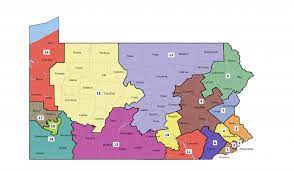PA Officially Loses Congressional Seat in Reapportionment

(The Center Square) – Pennsylvania officially lost a congressional seat on Monday after the U.S. Census Bureau released its 10-year apportionment data.
The latest results means the state’s 2.4% population growth between 2010 and 2020 wasn’t fast enough to save its 18th seat in the U.S. House of Representatives. Pennsylvania has lost a district in every reapportionment since 1930, federal data shows.
The state will also lose one vote in the Electoral College, reducing the state’s impact on presidential elections.
Total residents over the past decade crept up just over 13 million, making Pennsylvania the fifth most populous state in the country behind California, Texas, Florida and New York. Illinois followed in a close sixth place with more than 12.8 million residents. It, too, lost its 18th congressional seat.
The National Democratic Redistricting Committee, however, says the 15th district – which stretches from the state’s New York border in McKean and Warren counties more than 150 miles south to Cambria County – should be the first to go.
“Given population shifts within the Commonwealth, eliminating the 15th district provides the best opportunity to minimize the impact on representation in surrounding districts,” said Fernando Treviño, NDRC Pennsylvania State Director.
The NDRC credited itself for flipping 11 seats in the state House of Representatives and 5 Senate seats during the 2018 election cycle, breaking Republicans’ supermajority in the upper chamber.
Eliminating the 15th district, represented by Republican U.S. Rep. Glenn Thompson, could tip the state’s delegation from an even party split to a Democratic majority.
Pennsylvania’s recent reapportionment history, however, leaves little hope for a smooth transition. In 2011, critics argued that Republicans – who, at the time, controlled both chambers of the Legislature and the executive office – gerrymandered maps to cement their power that resulted in bizarre and nonsensical district borders.
The state Supreme Court tossed the maps in 2018 and forced the Legislature to start over. The redrawn districts flipped a 13-5 Republican majority to a 9-9 even split.
“NDRC will do everything in our power to ensure that there is a fair and transparent process that results in maps where both parties must compete to win the support of Pennsylvanians at the polls,” he said.
For now, it’s up to the Legislative Reapportionment Commission – staffed by the House and Senate minority and majority leaders – to begin the redistricting process. The commission will work with legislative staff to draw 17 new districts, based on the census data, that will require approval in the General Assembly and the governor’s signature.
The commission announced Monday that it would hold its first meeting that same day to collect testimony from more than 60 candidates who applied to be the group’s fifth member and chairperson. A second meeting is scheduled for Tuesday.
The state constitution says the fifth member cannot hold local, state or federal office “to which compensation is attached.” Former chairs include former state court judges, attorneys and university leaders.
The deadline to select a candidate is Friday.




